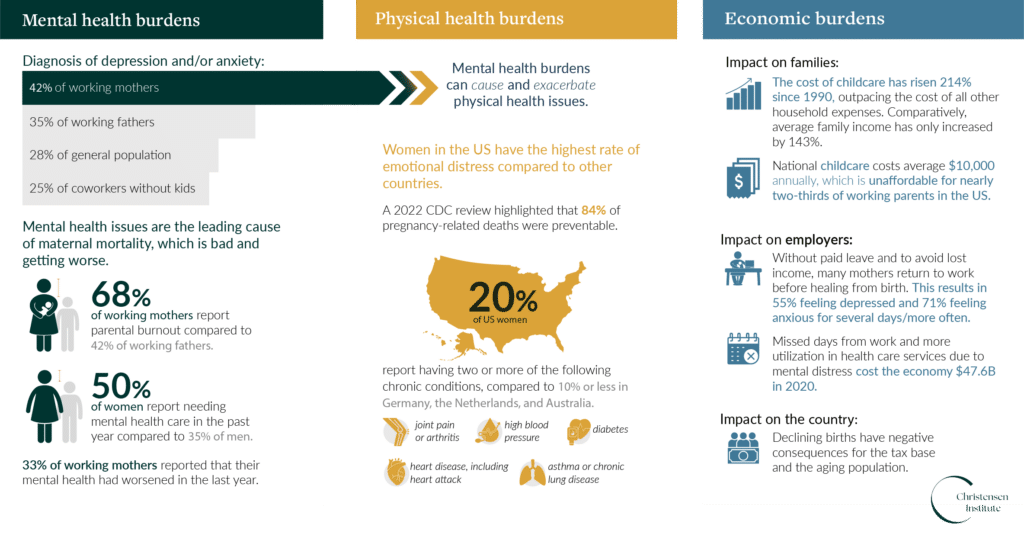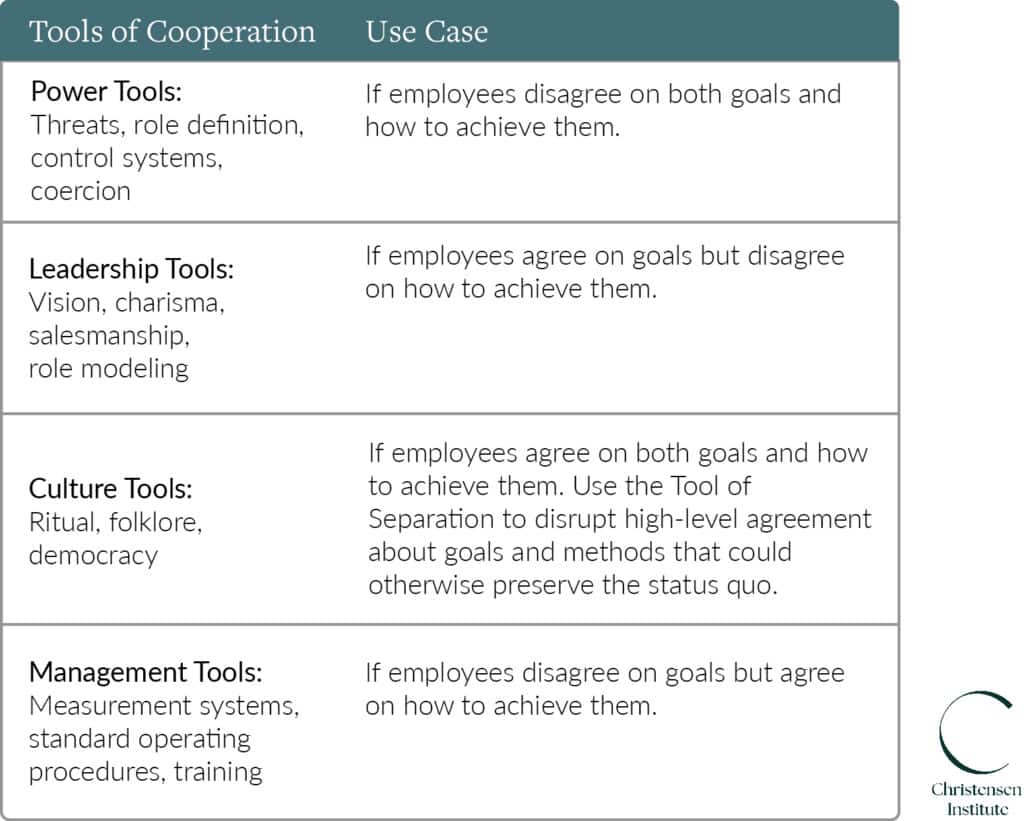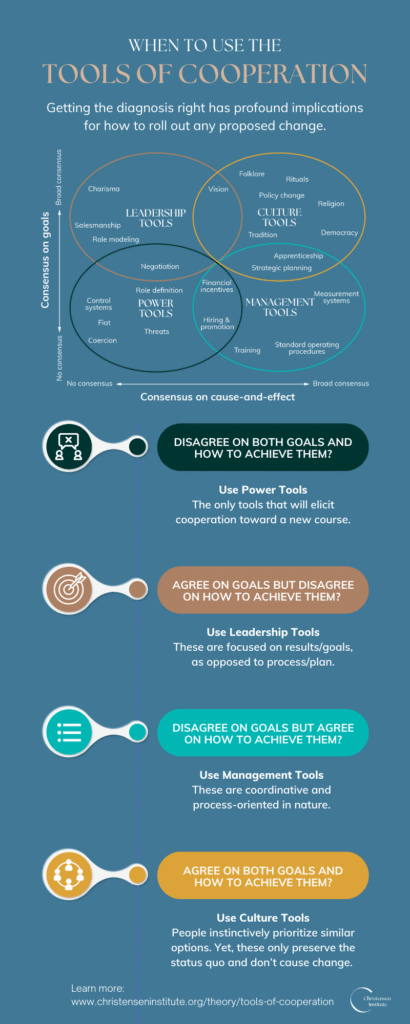Tools of Cooperation Theory
The theory that pinpoints which change management tools to use, and when, to reach consensus.

Definition
There are a variety of tools, ranging from motivational speeches to commands that an individual could use to elicit cooperative behavior in an organization, department, or business. These are called the Tools of Cooperation.
This theory helps leaders choose the right tools to drive change by assessing stakeholders’ agreement on what the organization’s goals should be and how it can achieve them. The graphic below depicts these two variables. The vertical axis measures the extent to which the people involved agree on the goals. In other words, what do they want?
The second dimension is plotted on the horizontal axis. It measures the extent to which the people involved agree on cause and effect—which actions will lead to the desired result. In other words, how will we achieve our goals?
Leaders seeking a specific change will find that figuring out their constituents’ placement on this diagram is time well spent. Getting the diagnosis right has profound implications for how to roll out any proposed change.
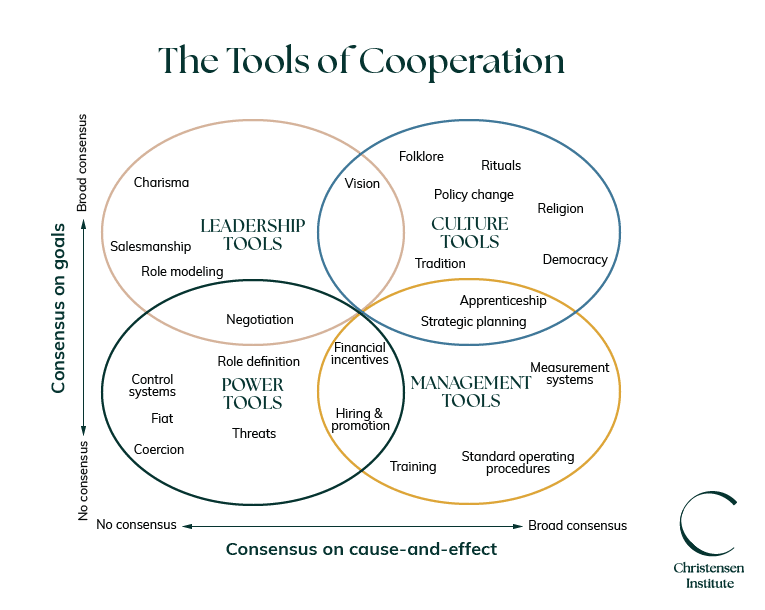
Unique Insight
Most Tools of Cooperation don’t work most of the time because the level of agreement isn’t assessed. As a result, leaders often fail when trying to manage change, as the tools they use waste credibility, energy, and resources.
Explainer
How can organizational leaders choose the right tools to drive change? It all depends on assessing stakeholders’ agreement on the organization’s goals and how it can achieve them. Check out our helpful video.
Case Studies
Helpful Tools
Infographic: When to use the Tools of Cooperation
What are the four different types of Tools of Cooperation specifically, and in what circumstances are each most effective? Click the image to download and check out our resource library for additional content.
Getting the diagnosis right has profound implications for how to roll out any proposed change.
- Disagree on both goals and how to achieve them?
Use Power Tools: The only tools that will elicit cooperation toward a new course. - Agree on goals but disagree on how to achieve them?
Use Leadership Tools: These are focused on results/goals, as opposed to process/plan. - Disagree on goals but agree on how to achieve them?
Use Management Tools: These are coordinative and process-oriented in nature. - Agree on both goals and how to achieve them?
Use Culture Tools: People instinctively prioritize similar options. Yet, these only preserve the status quo and don’t cause change.
At the Clayton Christensen Institute, we’re using Tools of Cooperation Theory to:

Help fund US childcare programs
While discussion around the cause-and-effect relationship of funding childcare is ongoing, there is a lack of focus around the key goals of funding it. As a result, the government is stuck. When progress is stymied due to a perceived lack of consensus on outcomes, the Tools of Cooperation theory can be effective in moving bipartisan discussions toward resolutions.

Support the United Nations’ climate initiatives
Despite hosting 27 UN Climate Change Conferences over the past three decades, United Nations chief, Antonio Guterres remarked that the world is on a “highway to climate hell.” It’s no surprise that he called for a “no nonsense” summit in 2023. However, the UN wields little power over member nations because it receives most of its funding from its members, with the US as the largest donor. It’s difficult to demand a “no nonsense” summit from the entities funding your existence as an organization. By assessing the Tools of Cooperation, it’s clear that Guterres and the UN should employ leadership tools. Few other tools can elicit the kind of transformative change needed to solve the global environmental challenges we face.

Understand how K-12 schools can pivot during crises
Schools that were prepared for COVID harnessed what the Tools of Cooperation theory describes as Leadership Tools. Yet, viewing insight through the theory surfaces an important caution for school leaders who want to apply this takeaway: Leadership tools only work when the people in the organization have shared goals and purpose. When people don’t buy into a shared vision, leadership tools are typically met with indifference or disdain and don’t motivate stakeholder behavior. Recent research reveals that schools spent years before the pandemic developing their shared visions of 21st century success. That groundwork is an essential precursor to pivoting successfully in a time of crisis.
